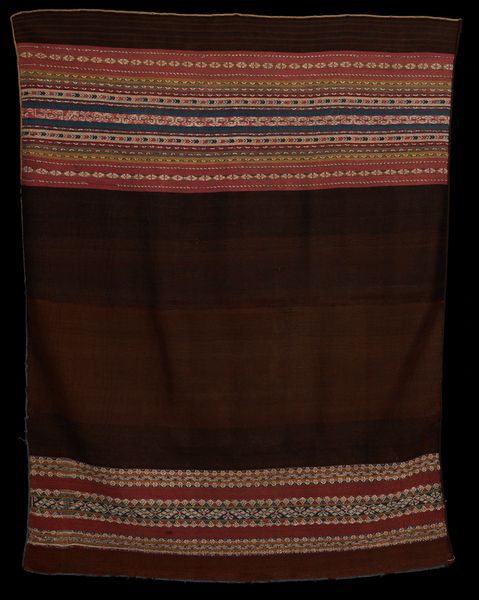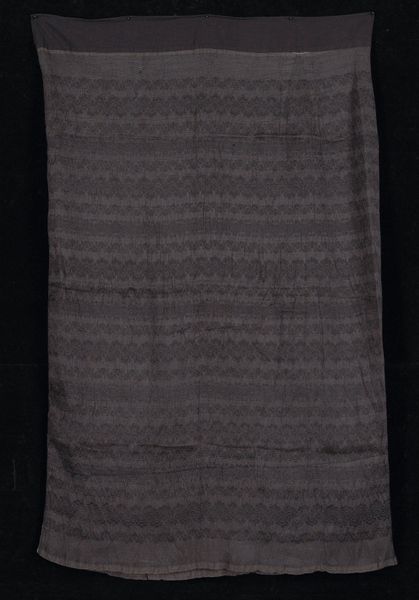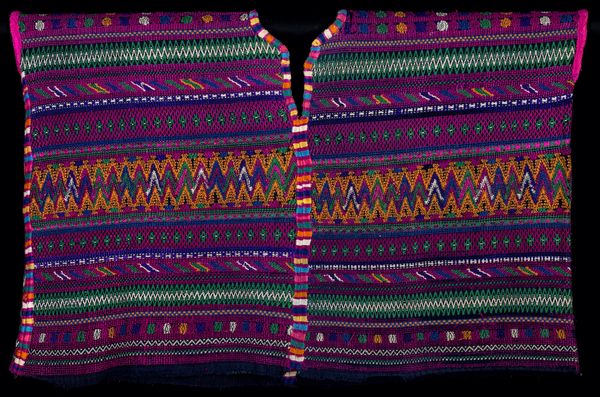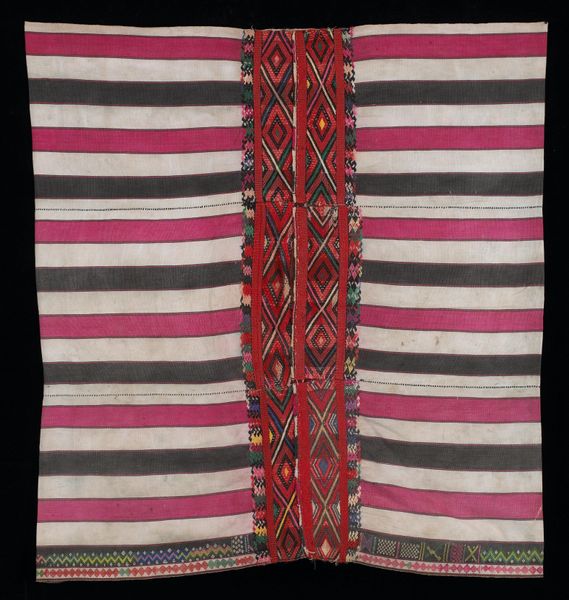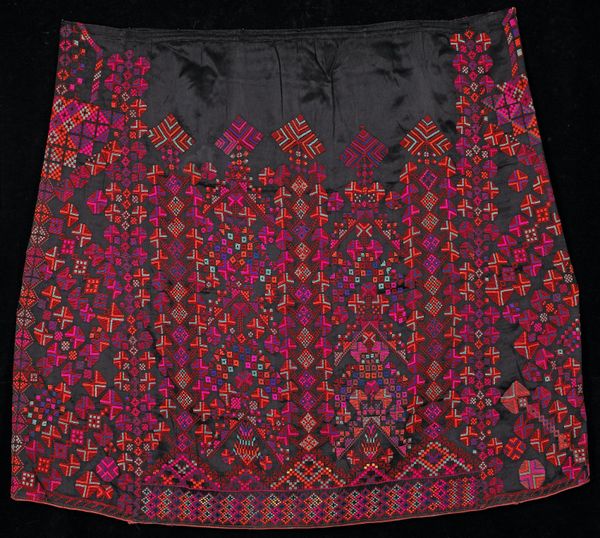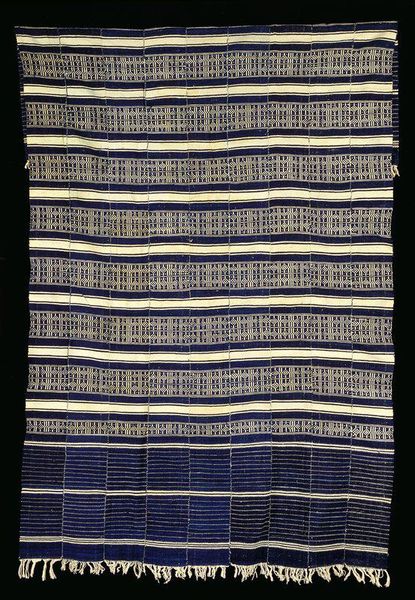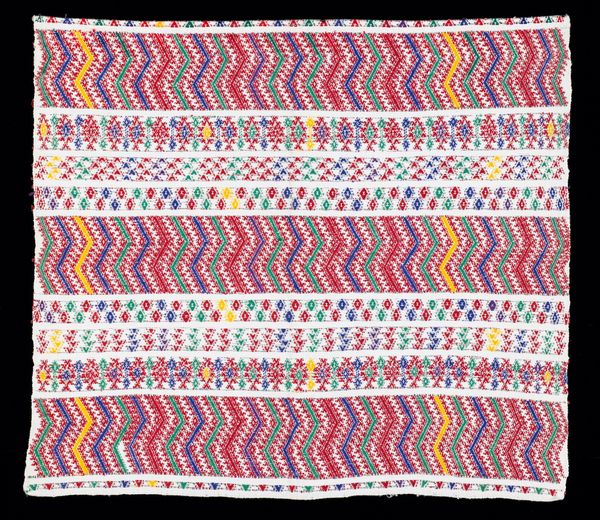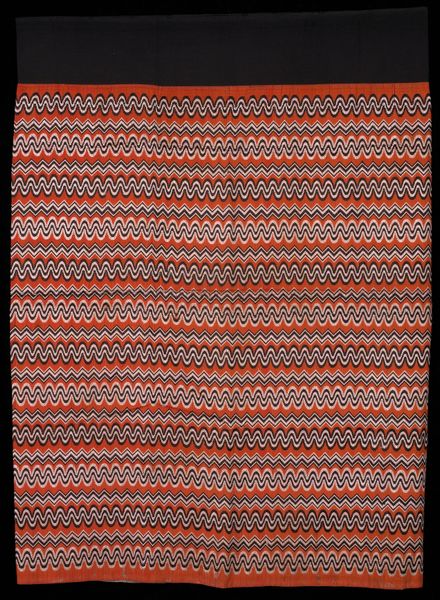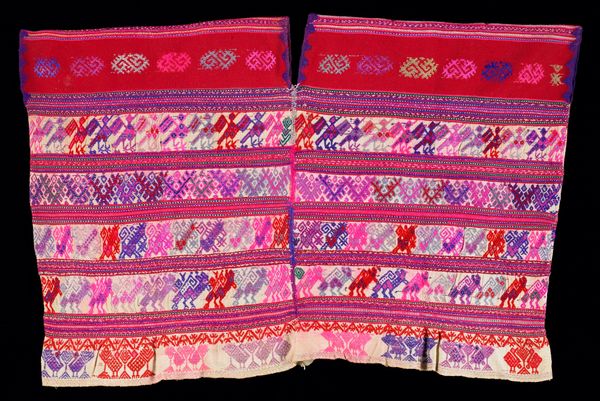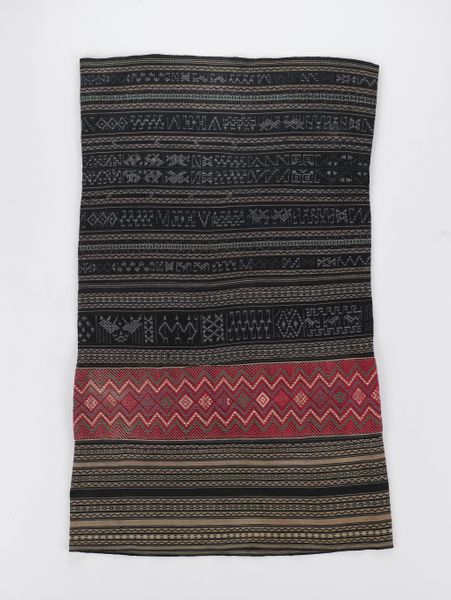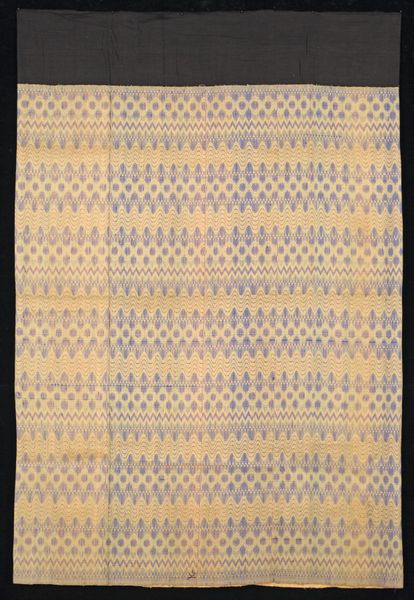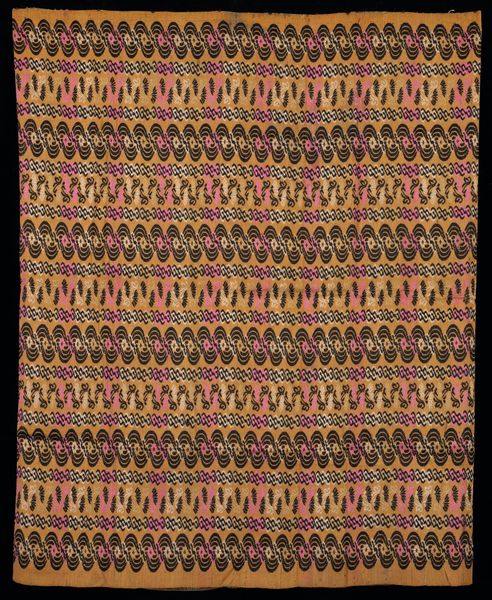
fibre-art, silk, textile
#
pattern heavy
#
fibre-art
#
silk
#
asian-art
#
textile
#
fashion and textile design
#
geometric pattern
#
repetition of pattern
#
vertical pattern
#
regular pattern
#
pattern repetition
#
textile design
#
imprinted textile
#
layered pattern
Dimensions: 39 1/2 x 32 1/2 in. (100.33 x 82.55 cm)
Copyright: Public Domain
Curator: Here we have a Luntaya-style skirt, dating from the mid-20th century, held within the Minneapolis Institute of Art. The skirt seems to be crafted from both silk and cotton, offering a rich tactile experience. What's your initial response to this piece? Editor: My first impression is that it's playful and visually loud. The undulating horizontal patterns immediately capture your eye with the layered effect and the pink, red, and purple hues. It’s unapologetically vibrant, even joyous. Curator: Indeed. These colours and repetitive patterns speak to the deep-seated human desire for visual order and pleasure. Historically, in many cultures, including within Southeast Asia where these skirts are often created, the weaving of textiles carried profound symbolic weight. Think of the symbolic meanings encoded within these patterns; these skirts were rarely just adornment. Editor: Precisely. Thinking about adornment and its cultural performance, who would have worn this? These textiles become charged when considering gender roles and socio-economic status of its wearer, and their ability to challenge norms. That complex history deserves attention. Curator: Certainly. The weaver's own life, imbued in each thread and colour choice, whispers of her social context. The skill involved in creating such even, regular patterns surely also had some social importance, setting its wearer apart through artistic expression. Each visual element possibly worked as visual cues, culturally recognized by many. Editor: Definitely. It also feels radical. While the technique might look ‘traditional’ on the surface, clothing –especially women’s clothing – has always been about pushing back, finding freedom in cultural confines. Curator: Looking closely at those zigzagging lines, one cannot help but think how, from prehistory to modernity, these represent, in one culture or another, everything from water and fertility to boundaries and the cycle of life. Editor: Absolutely, those layered meanings become critical in thinking through fashion design as both cultural artefact and deeply personal experience. Curator: What do you take away from this today? Editor: Today it encourages me to reconsider textiles not as static objects but dynamic interfaces between identity, culture, and artistic agency. It’s not just something pretty; it’s powerful.
Comments
No comments
Be the first to comment and join the conversation on the ultimate creative platform.


